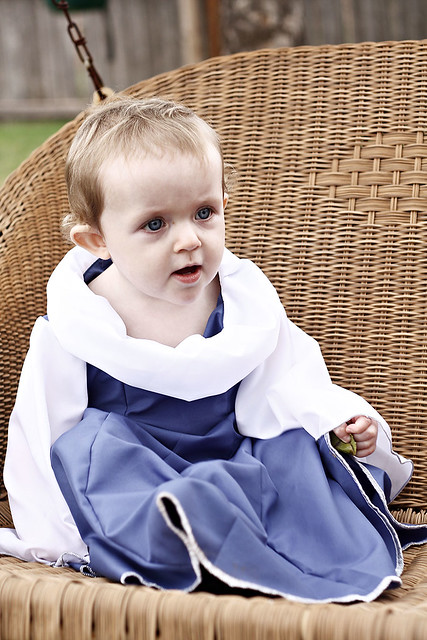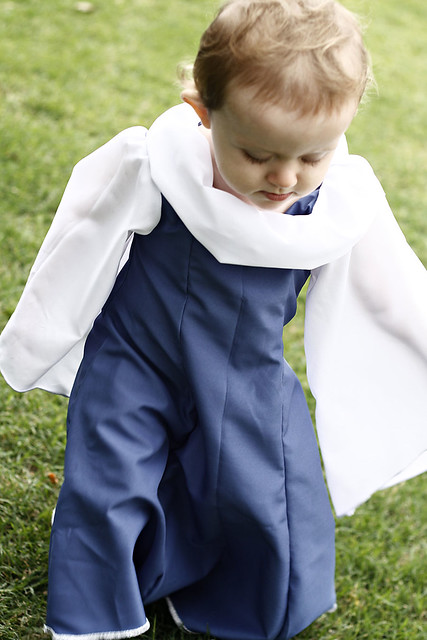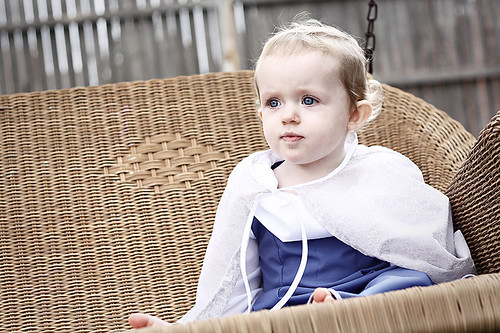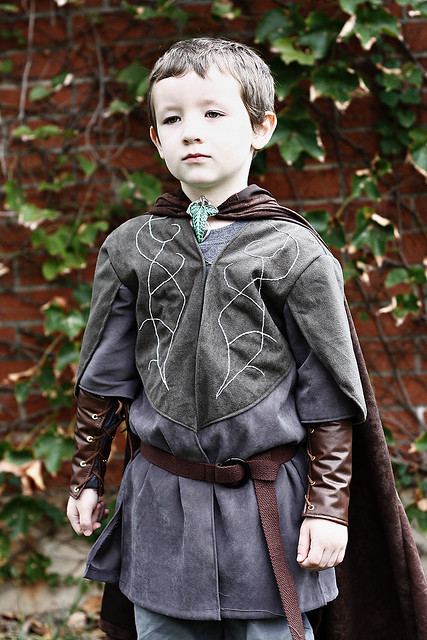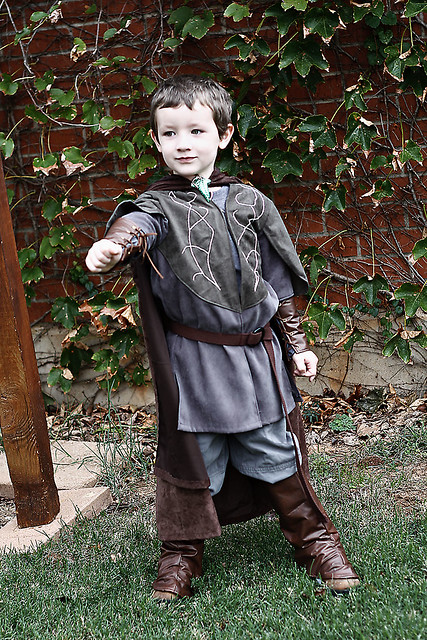I've had this little project in the works for a long time, but other things keep getting done first, like presents for this shower or this birthday. But I've finally got my priority projects out of the way, and a big incentive to do some extra sewing -- I finally upgraded the old sewing machine! The old girl was fine but my skills had outgrown her capabilities, and my new one is, well, it's smarter than me! I'm having lots of fun trying it out...
And I'm so glad I finally got this done, because it is *singing* awe-some! And best of all, super quick. :)
And what is this cute little envelope thing? It's my new buddy, my crochet buddy...
Getting everything organized just makes me so happy, and best of all, it put some of my small scraps to good use. All my hooks, nestled in their little pockets, easily found for any project and no longer lumped in the pocket of my yarn bag.
And my scissors fit right in the fold, not sitting in my bag where the baby always seems to find them (yikes! gives me a heart attack every time!).
I even put a nifty little pocket in there for my needles. Love it...
All you need for this project is some scrap fabric, Velcro and bias tape. *Please note on the bias tape: Not sure why I didn't make sure what I was buying when I bought it, but make sure to get the stuff that says "extra wide" and "double fold" on it. It's the stuff that's already folded in half and wide enough for projects like this. I kept going through my scraps and finding the skinny, single-fold stuff that you have to fold in half yourself and turns out super narrow when you do...
Here's the sizes for your pieces:
Sorry, should have ironed that pocket... Anywho, you should have six pieces total: one pocket, one needle pocket (optional), two flaps and two main pieces, one for the inside and one for the outside.
This pocket is sized for about 10 hooks. It depends on the size of your hooks and how many you want, but I ended up with room for 11, sized D through N.
First thing we'll do is the pocket for all your hooks. Fold your pocket in half, right sides together, so it's 8 inches wide and 4.5 inches tall.
With a 1/4 inch allowance, sew one side shut. Yes, just one side...
Then trim the corner on the folded end, and turn the pocket right side out, using something to push out that corner from the inside, making it nice and crisp.
Then place the pocket on the inside piece (on top of the right side), lining it up with the bottom left corner.
Sew it in place along both of the sides, sewing as close to the edge as possible.
Now grab a ruler and fabric marker/pencil. You're going to mark your lines for your hook slots. I was going to have them go from small to big, but I messed up on my markings and didn't want to have to redo them, so my big pockets are mixed in with my smaller ones. But I kind of like it. Either way, for my bigger hooks -- sizes I, J, K -- I made the pocket 3/4". For my biggest, N, I made it just a bit bigger than 3/4". For all the others, I made them 1/2".
Now sew along your lines, making sure to back stitch.
Next we'll do the flap. Grab your two flap pieces and put them together, wrong sides together and right sides out.
Now you're going to round the corners. Having them placed right on top of each other, fold them in half so the short ends are together and use your scissors to round the bottom corner (this way your corners will be the same). You can just eyeball it -- we're going to put bias tape around the edges. If you like doing corners with your bias tape, fell free to leave your flaps rectangular.
Leaving the flaps with wrong sides together, you'll sew bias tape around the short ends and bottom. You'll just open the bias tape and place the edge of the fabric snug in the fold of the tape and sew in place. The rounded corners allow you to keep going without having to stop and fold the tape into making a corner, but you'll still have to do a little bit of finageling (spelling?) with the bias tape around the corners. It was also helpful for me to stop, anchoring the project with my needle by putting it down, lift my presser foot and adjust the fabric around the curved spot.
And see? I still had a little bit of folding around the curves, but just a little. Nothing like doing full-out corners.
Now we need to shape the inside piece. You'll fold it with the hook pocket folding side to side, and the leftover will make the flap for your envelope. Again, you can leave this square if you want to do corners with your bias tape, but I rounded it to make it easier for me.
Set that aside and grab your needle pocket, if you're doing one. You'll also apply bias tape along the top of your pocket.
You can trim the bias tape flush with your pocket because the edges will be folded under. Also fold the bottom of the pocket where you want it and pin it (or you can press it in place -- I was just being lazy/quick).
With the bottom fold in place, you'll figure out where you want your pocket. This is important to line up if you're doing a rounded flap like me, because you don't want it to hang off. So figure out where you want it on your inside piece, then flip it to the left, so its right side is down, and try to keep that left side about where you want your pocket to start.
Next, sew along what is now the right side of the pocket, making sure the bottom fold gets stitched into place as well.
Now you'll fold the pocket back over toward the right, so now you're looking at the right side. Your stitching should hold the bottom fold in place, for the most part, and I just folded under the other side and quickly slid it under my presser foot. I held the fold in place as I stitched it down, but if it's giving you problems, you can iron the fold into place and then sew. I started at the top, right corner, sewed down the side, along the bottom and up the other side. I know the last side was already sewn down, but this gave the pocket a nice, top-stitched look all around instead of just on the side and bottom.
Now you'll put the inside on top of the outside, wrong sides together. Also put the flap in place, and pin everything down. Trim along the sides so all the pieces match exactly along the edges.
Now, if you want to close your envelope with Velcro and you're set on machine-sewing it down, do it here. You'll unpin the two pieces and put your Velcro (the hard, pokey part) on the outside piece, approximately 2 to 2 1/2 inches down from the edge (on the left side, not the rounded side). I somehow always get my pieces placed weird, so I waited and handstitched it in place later.
Now you'll put bias tape around the edges. To make this a little easier, I did a separate piece for the straight edge, then did another piece around the rest.
So here's my piece for the straight edge. I trimmed it exactly with the edges and then sewed it in place.
Then for the rest, I started out by trimming the end of my bias tape into a point, like this...
Then I fold it under before I fold the tape in half. This way you won't have pieces sticking out from your corner and it sits nicer without the extra bulk. I put the fabric edge right into that middle fold and sewed along. Again, I opted for the quicker/lazier way and didn't pin this one in place. But this was easier for me along the rounded edges.
TIP: As you do the rounded edges, open the bias tape and place the bottom half into place against the edge under the rounded part, then using your fingers to keep it in place, fold the top half down. This seemed to be an easier way to make the bias tape conform to the curve of the fabric instead of the fabric bunching to conform to the bias tape. Remember, bias tape has an incredible amount of stretch and should do the stretching instead of your fabric.
Then when I got close to the end, I trimmed this end into a point and folded in under, then folded it in half around the fabric, making sure everything fit in a nice corner and I didn't have any hanging over the end.
Then the last thing to do is the Velcro. I used the small, circular, adhesive ones. You'll place your soft-feeling Velcro in the center of the rounded edge (inside piece) and can machine-stitch into place. If you've already stitched your other Velcro in place, make sure to fold your crochet buddy so you can place the Velcro so it fits together well.
I had placed this one first, so after I had this stitched, I then folded it and placed the other one. The adhesive makes it great to get it right where you want it, but it makes it very difficult for handstitching -- just know you'll need a lot of effort to get your needle through that adhesive stuff. It's helpful if you have something grippy to hold your needle with. I used a whip stitch (good handstitching tutorial
here) to tack down all the edges of the Velcro. Not a pretty job, but I used light thread and you can barely see it. :)
And that's it! Now you have this sweet little buddy to hold your needles, hooks and scissors so everything is easy to find and use...
If you like this project, leave me some comments! I'd love to hear from you.

































